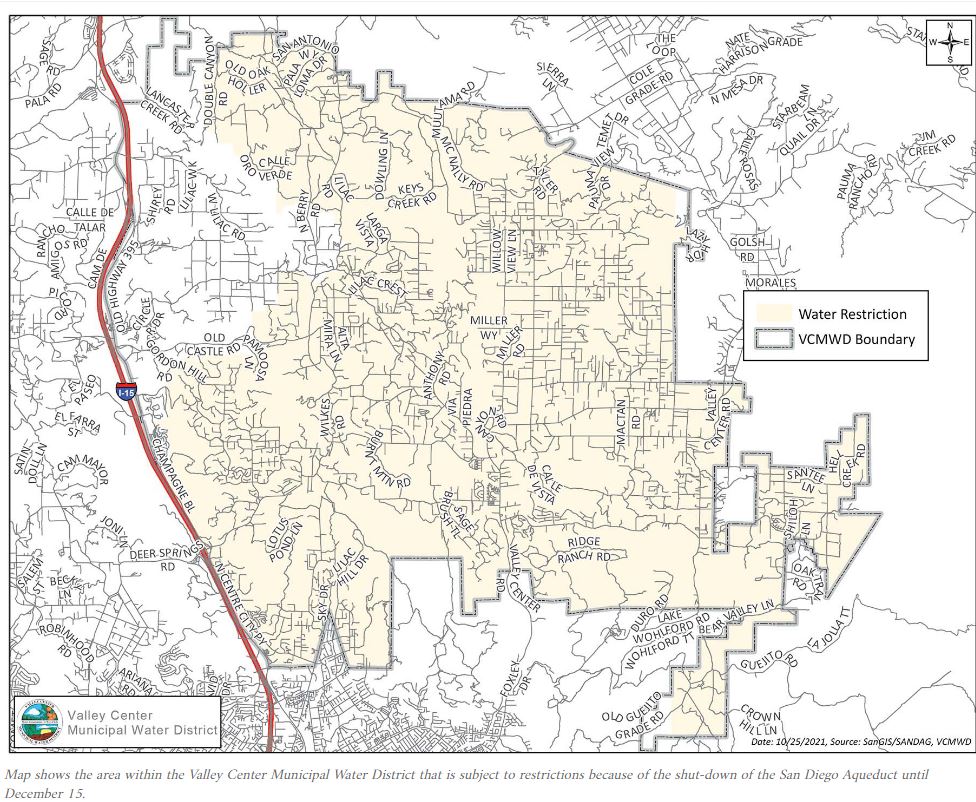Aqueduct Shutdown December 4 – 15
On December 4, 2021, the San Diego County Water Authority will be taking the 74-year old 1st San Diego Aqueduct out of service until December 15, 2021. With the aqueduct being off the district loses water supply to approximately 85% of the District’s its area (see map).

The Water Authority is taking the 48” diameter pipeline out of service to inspect and make final design decisions on how to make the needed repairs to the three tunnels discovered in the recently completed northern 1st Aqueduct relining project.


